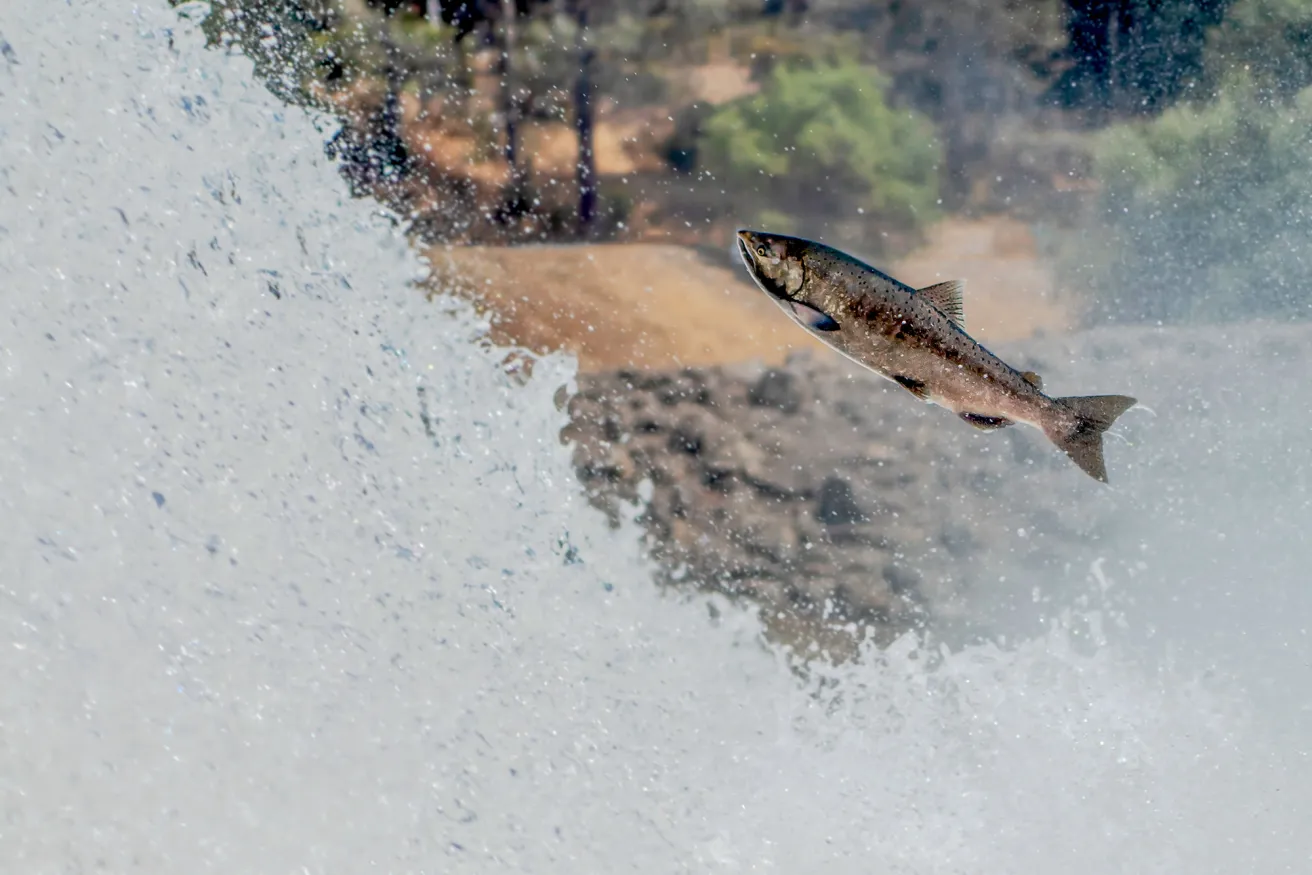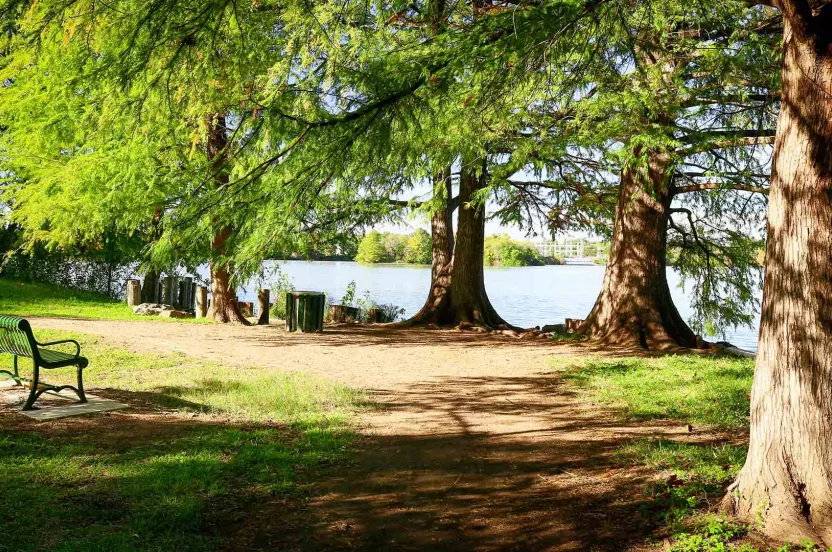Now live: The 2025 Canopy Report. Learn how Americans see trees. GET THE REPORT
Shielding a Sacred Tribal Food Source with Trees
The legacy and destiny of salmon in the Pacific Northwest.
August 11, 2023

The story of the salmon is one of both tragedy and triumph.
Woven intimately with the culture of Native American tribes in the Pacific Northwest, salmon are at the center of their society. The backbone of their diet, religion, and economy.
According to the Columbia River Inter-Tribal Fish Commission (CRITFC), salmon are hailed as a traditional ‘first food,’ designated for its importance to tribes thousands of years before contact with outside cultures.
“We don’t exist separate from our first foods,” notes Jill-Marie Gavin, CRITFC public information specialist. “We’ve always been taught if you take care of your first foods, your first foods will take care of you.”
But non-native communities have not always served as considerate caretakers for salmon. The species and its habitat have faced clear-cutting, erosion from gold dredging, and the construction of multiple, disruptive dams. With outside cultures encroaching on tribal land to fish, the salmon population in the Pacific Northwest plummeted from about 17 million in the mid-1800s to one million a century later. Salmon were barreling toward extinction.
Until tribes helped turn the tides.
The fight for the land
Through a series of court battles in the 1970s, tribal leaders took back the fishing rights established in early treaties with the United States. Soon after, CRITFC was formed to continue to protect those rights, grow the salmon population, and protect the watersheds where salmon live.
CRITFC communications director Jeremy FiveCrows says habitat restoration is a key part of the organization’s work. The group collaborates with ranchers to limit cattle exposure to salmon habitat and reconstruct the natural, curving streams that some landowners had straightened out.
“A lot of our efforts with specific habitat work in that regard is undoing that kind of damage. And it’s really heartening when you see where they’ll put the meanders back in and give a little jumpstart by planting riparian trees,” FiveCrows explains, referring to trees that grow along rivers. “It only takes a couple of years…and then nature kind of takes over and it’s like day and night watching things heal.”
Facing a new adversary
Historically in the Pacific Northwest, massive mountain snowpacks melt a steady supply of fresh water into salmon streams. But as the Earth’s temperatures continue to rise, snowpacks are shrinking. River quantities are running lower and river temperatures are running warmer.
As a cold-water species, low-temperature streams are non-negotiable for salmon. Water conditions above 70 degrees Fahrenheit are lethal.
CRITFC leaders worry that if warmer water temperatures continue to push further north, it could push salmon out of the region they’ve called home for thousands of years.
“If the first foods range moves north, then it’s like the first foods have left us. We’re still going to be in this place, but the foods will have moved on,” FiveCrows says. “What a destruction that would be to the cultures that are based on those foods.”
An absence of salmon would lead to deep spiritual sorrow for native communities in the Pacific Northwest. According to the origin stories of tribes in the region, the Creator called together the animals and plants living in the area to tell them about the impending arrival of humans. He said this new race would be helpless at first and asked them all to provide a gift so that mankind might survive. The salmon was the first to step forward, offering his body to nourish humanity. The sacrifice was never forgotten, etched deep in the hearts and souls of many generations to follow.
The cultural consequences for tribes are not the sole worry. In the Pacific Northwest, salmon are a major contributor to biodiversity, the variety of wildlife in a given area, from animals to bacteria. According to the Wild Salmon Center, at least 137 different species depend on the marine-rich nutrients that salmon provide. Even a single dead salmon, carried by a bear into the woods, will decompose to fertilize the area with marine nutrients — growing healthier, lush forests that better shade the streams. In nature, all is connected.
“If there’s this marine nutrient source that the entire system is built on, all of a sudden that goes away, that’s a huge impact to the whole ecosystem, not just to the tribes,” FiveCrows warns.
The Arbor Day Foundation is working to help cool down overheated waterways in the Willamette Basin by planting trees. The promise of trees for this area and the wider American Pacific West is why the Foundation has designated it a global priority region. Scientists say trees can reduce temperatures by up to 10 degrees Fahrenheit. For salmon, that’s the difference between life and death.
Hope for the future
Though climate change will likely continue to be a tough opponent for salmon, CRITFC leaders feel optimistic about the future.
“The salmon is not separate from us, and we are not separate from the salmon. So, we will survive and we’ll figure out how to bring that piece of us with us,” Gavin pledges.
It’s a long-term commitment to preservation, and tribal community members know the stakes are high. As a former elected leader of the Umatilla tribe in the Columbia Plateau region, Gavin saw at least one-thousand acres of land gift-deeded back to the tribe or designated for the tribe in a will.
“[They do it] if they don't have someone in their family that they trust to hold onto it and manage it properly, or if they're concerned that their own children are going to sell it off to out-of-state buyers or developers,” she explains. “They really love the land and they're connected in a way that people who are not from here are connected. And they recognize that we will take care of it.”
The land is not just land. Salmon is not just salmon. They are critical components of a culture that’s demonstrated its resilience in the face of immense struggle and heartbreak.
“If you only focus on the negative, then you'll be stuck there. Let's at least harness this time when other people are looking at indigenous food systems and land management,” Gavin offers. “Let's grab onto this moment because really at the end of the day, it's about our land and it's about our species and our foods.”



